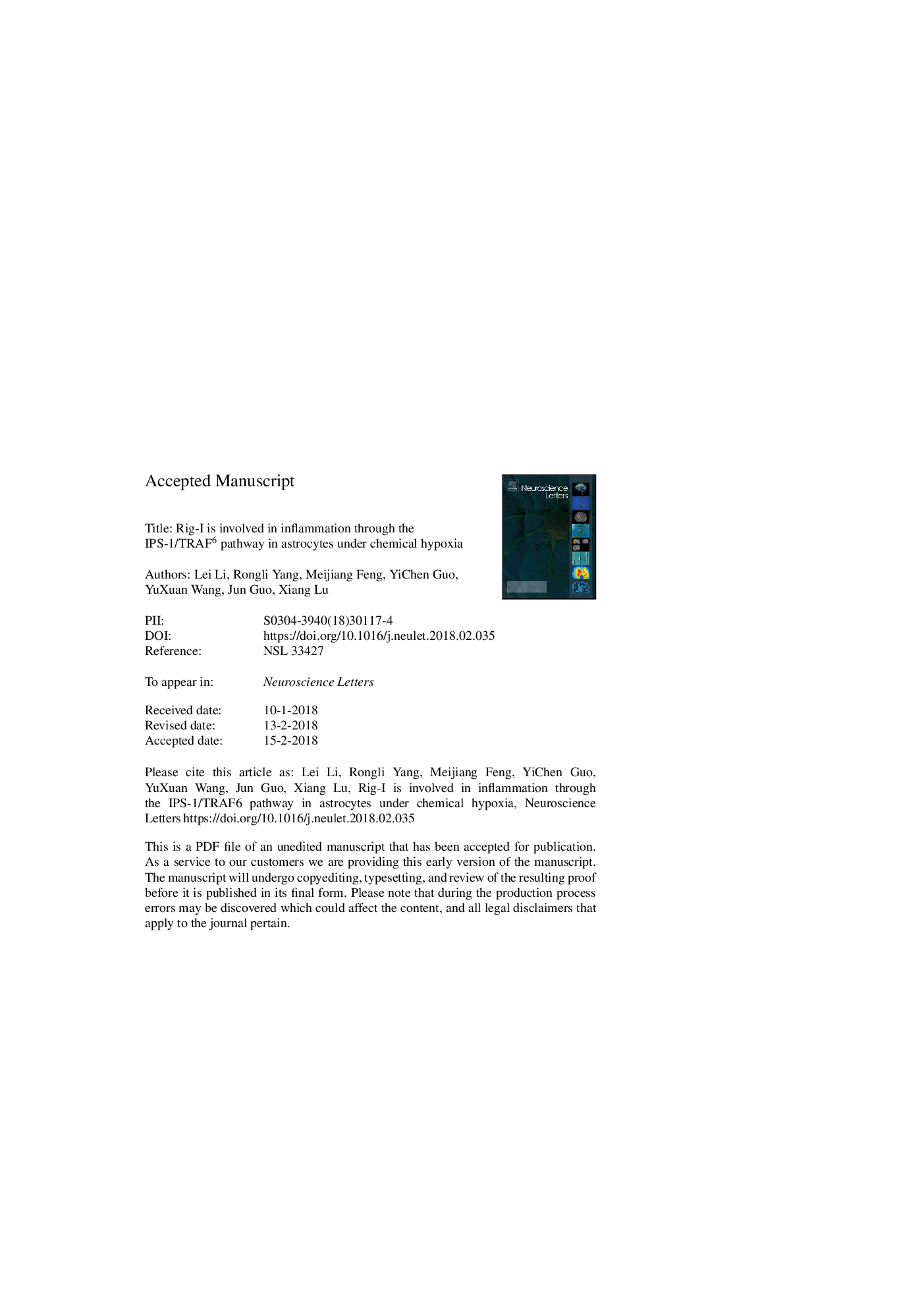| Article ID | Journal | Published Year | Pages | File Type |
|---|---|---|---|---|
| 8841618 | Neuroscience Letters | 2018 | 20 Pages |
Abstract
The retinoic acid-inducible gene I (RIG-I) is a crucial cytoplasmic pathogen recognition receptor involved in neuroinflammation in degenerative diseases. In the present study, in vitro human astrocytes were subjected to a chemical hypoxia model using cobalt chloride pretreatment. Chemical hypoxia induces the up-regulation of RIG-I in astrocytes and results in the expression of inflammatory cytokines IL-1β, IL-6, and TNF-α in an NF-κB dependent manner. Elevated RIG-I modulates the interaction of interferon-β promoter stimulator-1 (IPS-1) and TNF receptor-associated factor 6 (TRAF6) following chemical hypoxia. Inhibition of IPS-1 or TRAF6 suppresses RIG-I-induced NF-κB activation and inflammatory cytokines in response to chemical hypoxia. These data suggest that chemical hypoxia leads to RIG-I activation and the expression of inflammatory cytokines through the NF-κB pathway. Blocking IPS-1/TRAF6 pathway relieves RIG-I-induced neuroinflammation in astrocytes subjected to hypoxia.
Keywords
DAMPscaspase activation and recruitment domainsTBIIPS-1NLRsRLRsPDTCCARDSTRAFMDA5RIG-IIRF3PRRsTRAF6DMEMCoCl2PAMPsTLRsTraumatic brain injuryNeuroinflammationdamage-associated molecular patternspathogen-associated molecular patternsCNScentral nervous systemTNF receptor-associated factorDulbecco’s modified eagle’s mediumNitrocelluloseChemical hypoxiaintermittent hypoxiapyrrolidinedithiocarbamatemelanoma differentiation-associated gene 5retinoic acid-inducible gene ICobalt chlorideNOD-like receptorspattern recognition receptorsToll-like receptors
Related Topics
Life Sciences
Neuroscience
Neuroscience (General)
Authors
Lei Li, Rongli Yang, Meijiang Feng, YiChen Guo, YuXuan Wang, Jun Guo, Xiang Lu,
